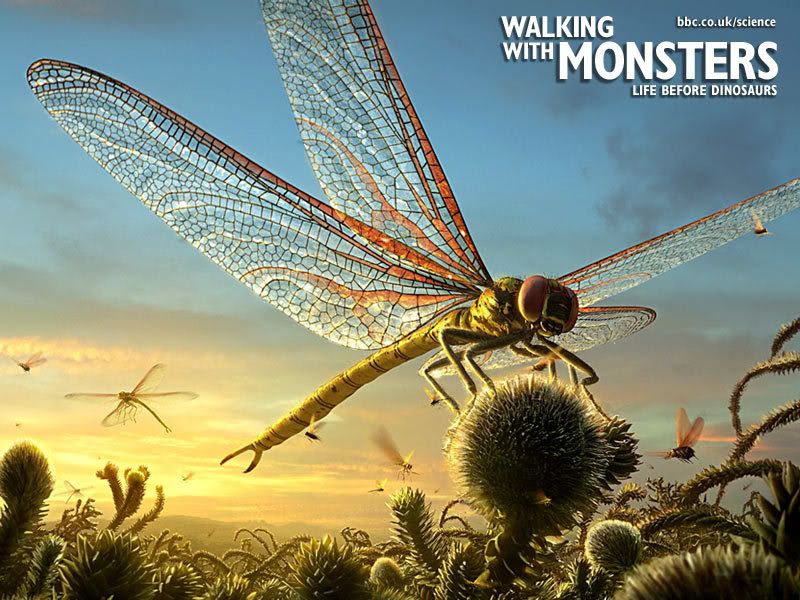Post by Barry the Baryonyx on Jul 17, 2007 0:07:49 GMT -5
Meganeura

Wikipedia Image © 2007 BBC
Meganeura monyi was a prehistoric insect of the Carboniferous period (300 million years ago), resembling and related to the present-day dragonfly. With a wingspan of more than 75 cm (2 feet) wide, it was the largest known flying insect species to ever appear on earth (the Permian Meganeuropsis permiana being another contender). It was predatory, feeding on small amphibians and other insects.
Fossils were discovered in the Stephanian Coal Measures of Commentry in France in 1880; in 1885, French paleantologist Charles Brongniart described and named the fossil. Another fine fossil specimen was found in Bolsover, Derbyshire, in 1979. The holotype is housed in the Muséum National d'Histoire Naturelle, Paris.
Controversy has prevailed as to how insects of the Carboniferous period were able to grow so large. The way oxygen is diffused through the insect's body via its tracheal breathing system puts an upper limit on body size, which prehistoric insects seem to have well exceeded. It was originally proposed (Harlé & Harlé, 1911) that Meganeura was only able to fly because the atmosphere at that time contained more oxygen than the present 20 percent. This theory was dismissed by fellow scientists, but has found approval more recently through further study into the relationship between gigantism and oxygen availability (Chapelle & Peck, Nature, 1999). If this theory is correct, these insect giants would have been perilously susceptible to falling oxygen levels and certainly could not survive in our modern atmosphere. The word Meganeura means "Big Genes"
Popular Culture
Meganeura appears briefly in BBC's Walking With Monsters, in which it snatches a small reptile from a giant spider
Meganeura also appears as the main villain in the Japanese Kaiju film "Godzilla x Megaguirus" which substantially exaggerates both the species size and its role in the food chain.
© 2007 Answers Corporation


 Is it just us?
Is it just us?